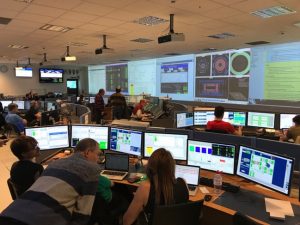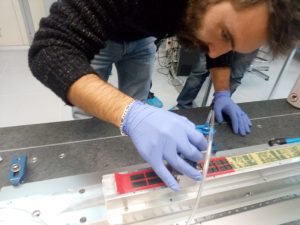
After the winter technical stop, the Large Hadron Collider (LHC) at CERN is again delivering collisions for the experiments.
Each year, the accelerator stops over winter to enable technicians and engineers to perform essential repairs and improvements. This year the stop was scheduled to run longer, allowing more complex work to take place.
The data taking now is restarting, and is foreseen to last till the end of 2018 when the 18 months Long Shutdown 2 (LS2) will start. This will be the second long stop of the accelerator meant to perform major upgrade of both the accelerator and the four detectors installed on it.
ALICE, ATLAS, CMS, and LHCb collaborations are presently not only acquiring and analyzing the collected data, but intensively working for having more performing detectors for Run 3 phase of the LHC that will see also an increase of energy from 13 to 14 TeV.

At Frascati, the availability of workshops and technical infrastructures has determined the convergence of the realization of many upgrade programs of LHC apparatus: the silicon Inner Tracking System of ALICE and the Muon Systems of ATLAS, CMS and LHCb. In the clean rooms of our lab, teams of scientists and technicians are assembling and testing the new detectors for the next phase of the LHC activity.
“It’s a tough work” says Barbara Sciascia, the local team leader of the LHCb group. “People have to work for many hours in a clean room, paying attention to each operation, since only very few things can be automatized”.
Each element of modern particle detectors is a unique piece of scientific handicraft. They are complex systems completely designed and built in house. Often, new technologies have to be developed, promoting strong synergies and cooperation with high-tech industries.
 INFN-LNF Laboratori Nazionali di Frascati
INFN-LNF Laboratori Nazionali di Frascati